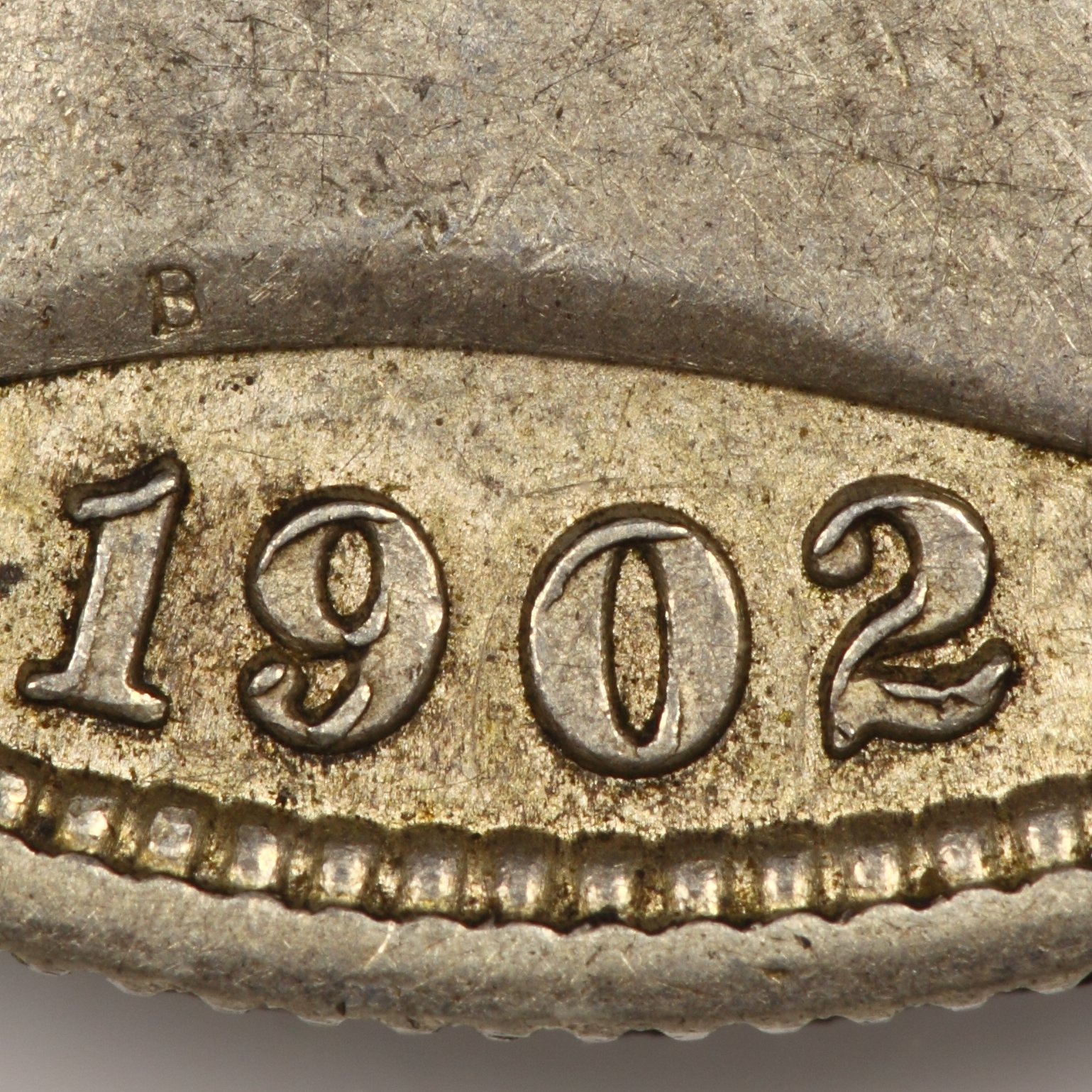Help! Odd Digits on the Date of a 1902 S Half
I purchase a 1902 S Barber Half a few years back and noticed odd looking blobs of metal on all 4 digits in the date.


The blobs look struck to me, but since the digits are fully struck I don't think extra metal was struck in. It's my belief the digits on the die were gouged- possibly chipped. Due to the consistancy of the blobs my guess is periodic chipping of the die wasn't the culprit. My guess is that the die received extra "punches" ans the date was applied, but to all 4 digits?
I've looked for another example of this oddity to no avail. Does anyone have insight on what may have caused this? Has anyone seen something like this before?
I love them Barber Halves.....
1
Comments
Great close-up shot. I do not know but it sure looks cool.
Click on this link to see my ebay listings.
Fine example of ? All the excess metal seems to be coming from the north west (11 O'clock position) on the numbers. There is more than just a chipped die going on here.
"Keep your malarkey filter in good operating order" -Walter Breen
Machine doubling damage.
Edit: The obverse die started to shear off the date, most likely as the coin was being ejected after being struck.
Keeper of the VAM Catalog • Professional Coin Imaging • Prime Number Set • World Coins in Early America • British Trade Dollars • Variety Attribution
If it's machine doubling where did the extra metal come from? Wouldn't there be signs of doubling on other parts of the coin as well?
As the die pulled away from the just-struck coin, it did not rise straight up but instead "shimmied" sideways a bit and scraped against the sides of the raised numerals. This pushed against the metal of the numerals and it had nowhere to go but up.
After the coin was struck and while it was still partially "engaged" with the die, it was being pushed out of the coining chamber in the direction of the top of the obverse. The date got partially sheared by the die because of this contact, and the extra metal is simply the date being deformed.
Keeper of the VAM Catalog • Professional Coin Imaging • Prime Number Set • World Coins in Early America • British Trade Dollars • Variety Attribution
Capt. is correct, as usual.....
Mystery solved. Leave it to the talent on this board!
CaptHenway answer sounds logical.
a new thing learned. cool
That sounds as logical as anything I can think of. If another identical one is found, however, we may need to revisit the issue.
Another coin would simply be from
the same effect, probably struck
at the same time.
It wouldn't change the analysis.
+1 for machine doubling.
For the grade, I really like that coin!
My YouTube Channel
Excellent analysis by the good Capt. and Fred W. ..... Thanks, Cheers, RickO